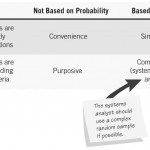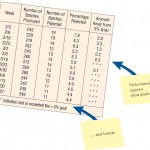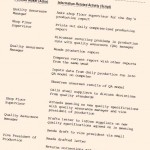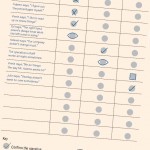Just by being present in an organization, the systems analyst changes it. However, unobtrusive methods such as sampling, investigation, and observing a decision maker’s behavior and interaction with his or her physical environment are less disruptive … [Read more...] about Unobtrusive Methods of Information Gathering
Information Gathering: Unobtrusive Methods
Sampling – Information Gathering
Sampling is the process of systematically selecting representative elements of a population. When these selected elements are examined closely, it is assumed that the analysis will reveal useful information about the population as a whole.The … [Read more...] about Sampling – Information Gathering
Sampling Design in Information Gathering
A systems analyst must follow four steps to design a good sample:1. Determine the data to be collected or described.2. Determine the population to be sampled.3. Choose the type of sample.4. Decide on the sample size.These steps are described … [Read more...] about Sampling Design in Information Gathering
The Sample Size Decision (Information Gathering)
The sample size often depends on the cost involved or the time required by the systems analyst, or even the time available by people in the organization. This subsection gives the systems analyst some guidelines for determining the required sample … [Read more...] about The Sample Size Decision (Information Gathering)
Investigation – Analyzing Quantitative Documents
Investigation is the act of discovery and analysis of data. While investigating evidence in an organization, the analyst acts like Sherlock Holmes, the fabled detective from 221B Baker Street.As the systems analyst works to understand users, … [Read more...] about Investigation – Analyzing Quantitative Documents
Investigation – Analyzing Qualitative Documents
Qualitative documents include email messages, memos, signs on bulletin boards and in work areas, Web pages, procedure manuals, and policy handbooks. Many of these documents are rich in details revealing the expectations for behavior of others that … [Read more...] about Investigation – Analyzing Qualitative Documents
Observing a Decision Maker’s Behavior
Observing decision makers, their physical environment, and their interaction with their physical, ergonomic environment is an important unobtrusive method for the systems analyst. Through observing activities of decision makers, the analyst seeks to … [Read more...] about Observing a Decision Maker’s Behavior
Observing the Physical Environment
Observing the activities of decision makers is just one way to assess their information requirements. Observing the physical environment where decision makers work also reveals much about their human information requirements. Most often, such … [Read more...] about Observing the Physical Environment






